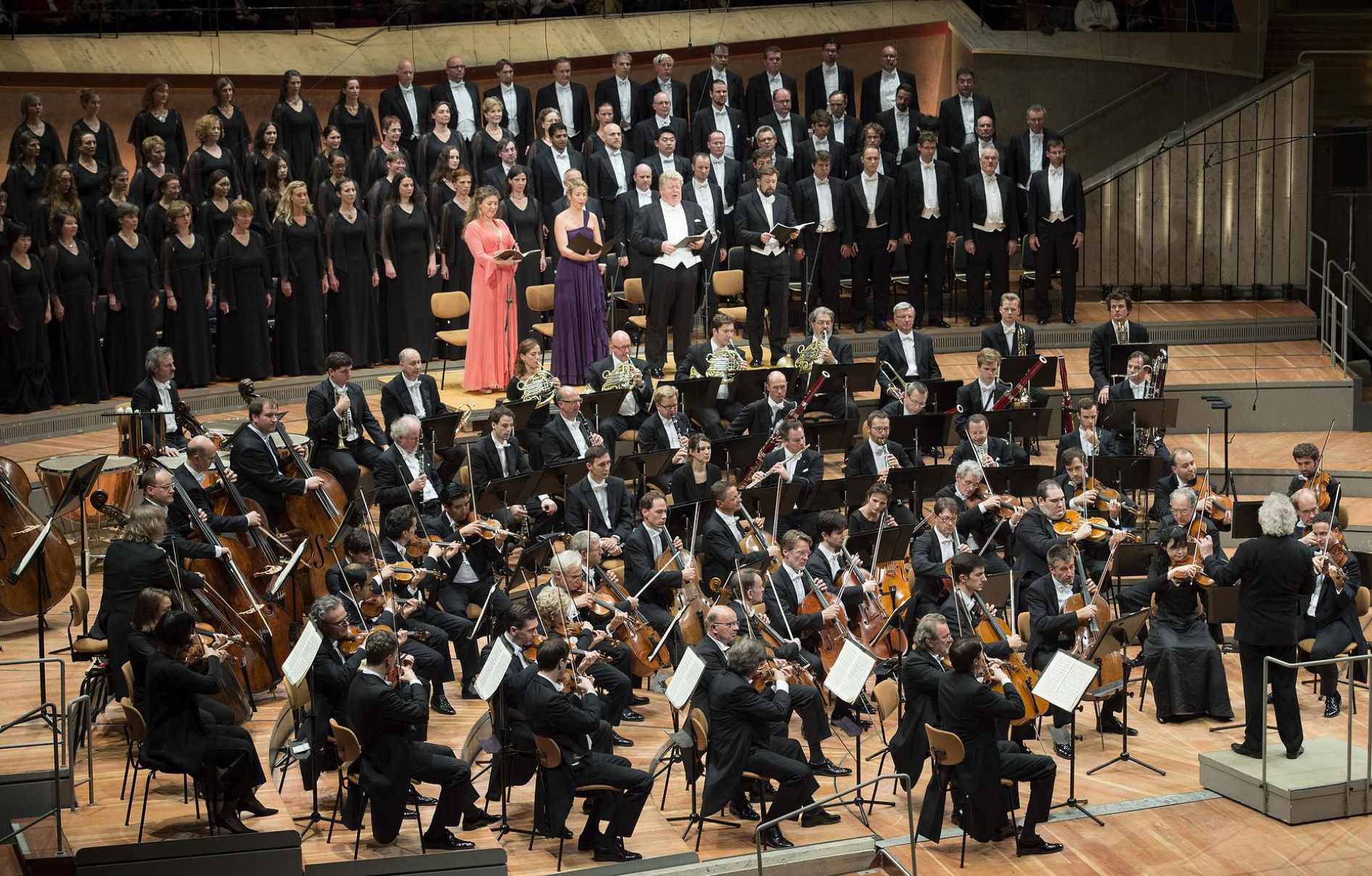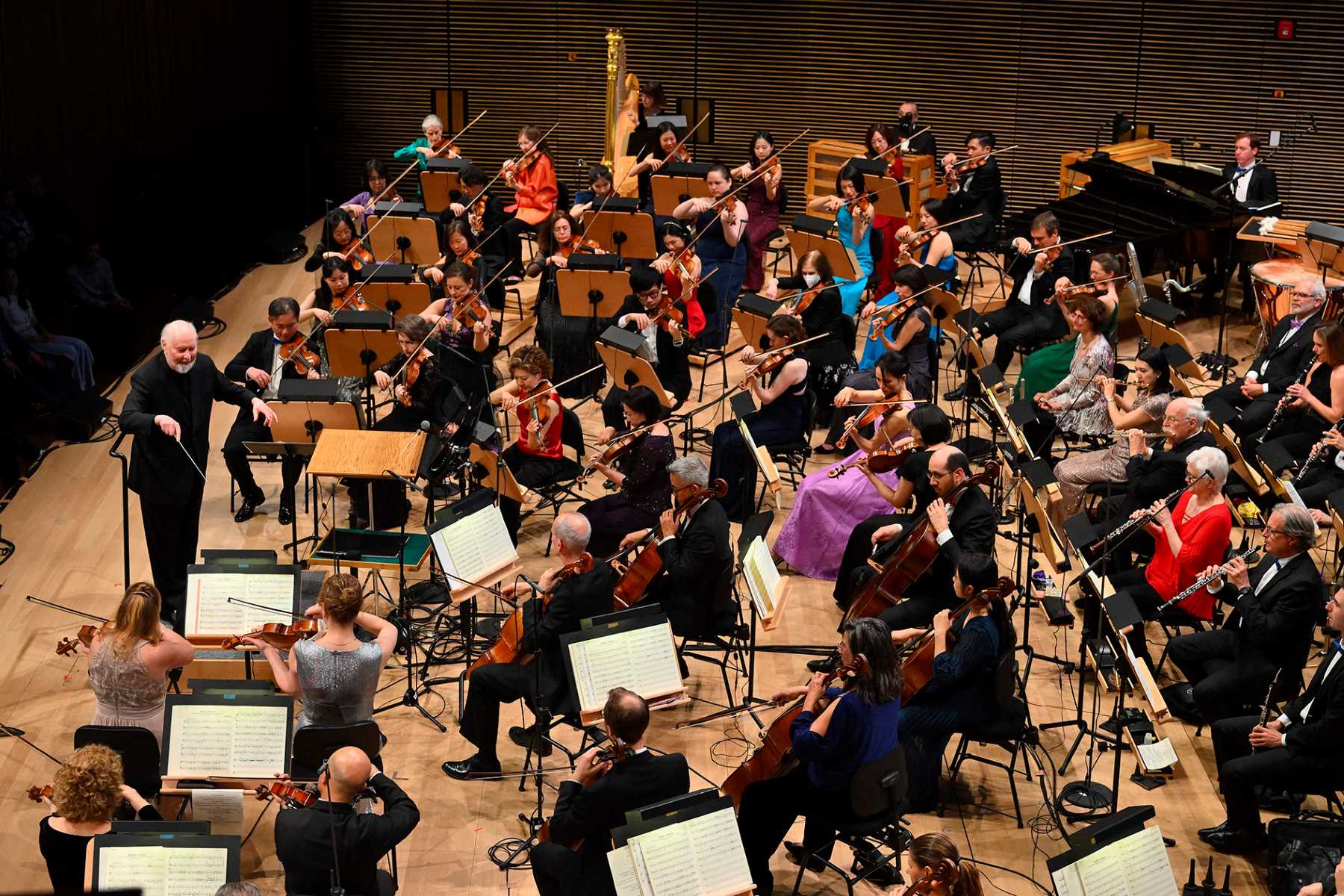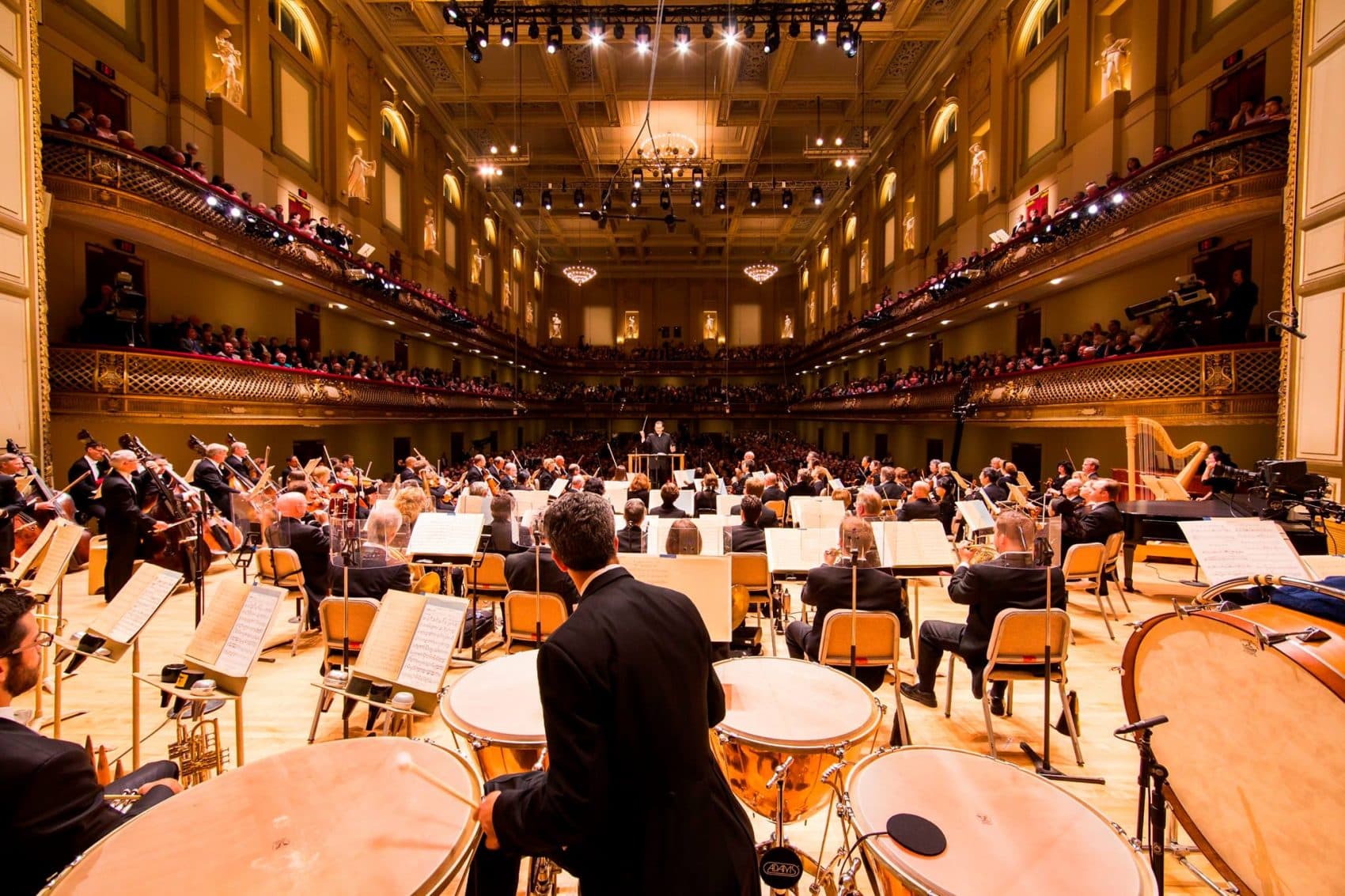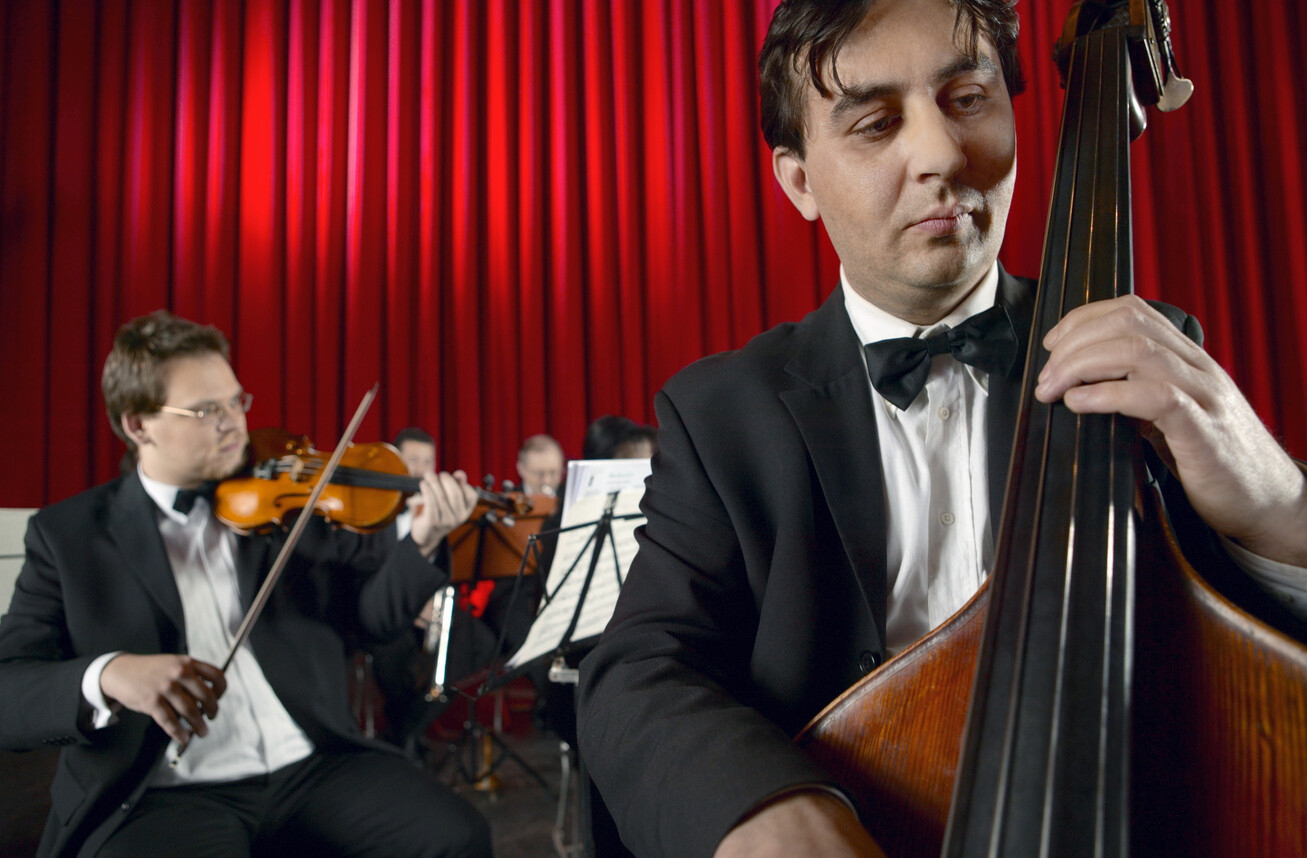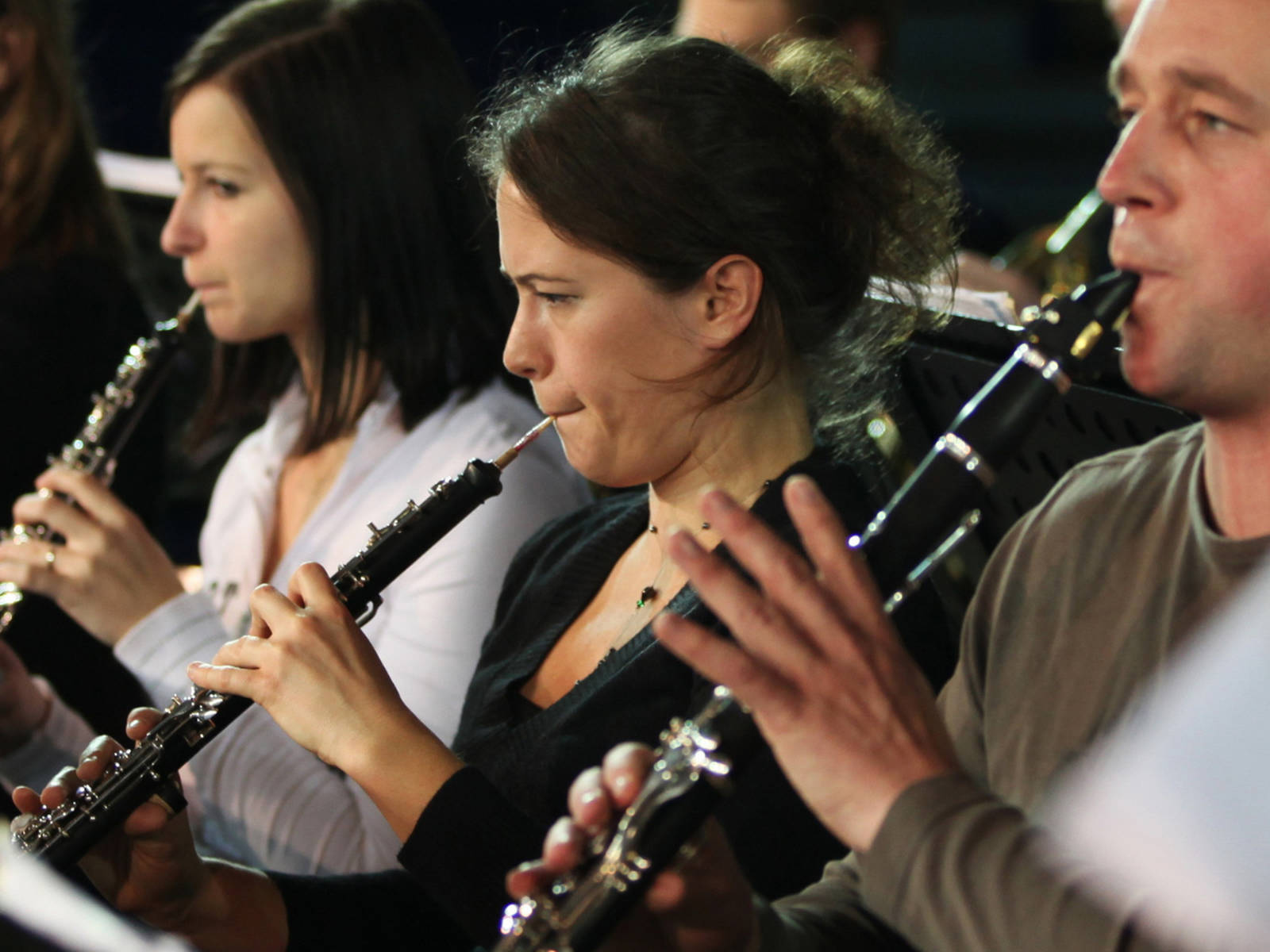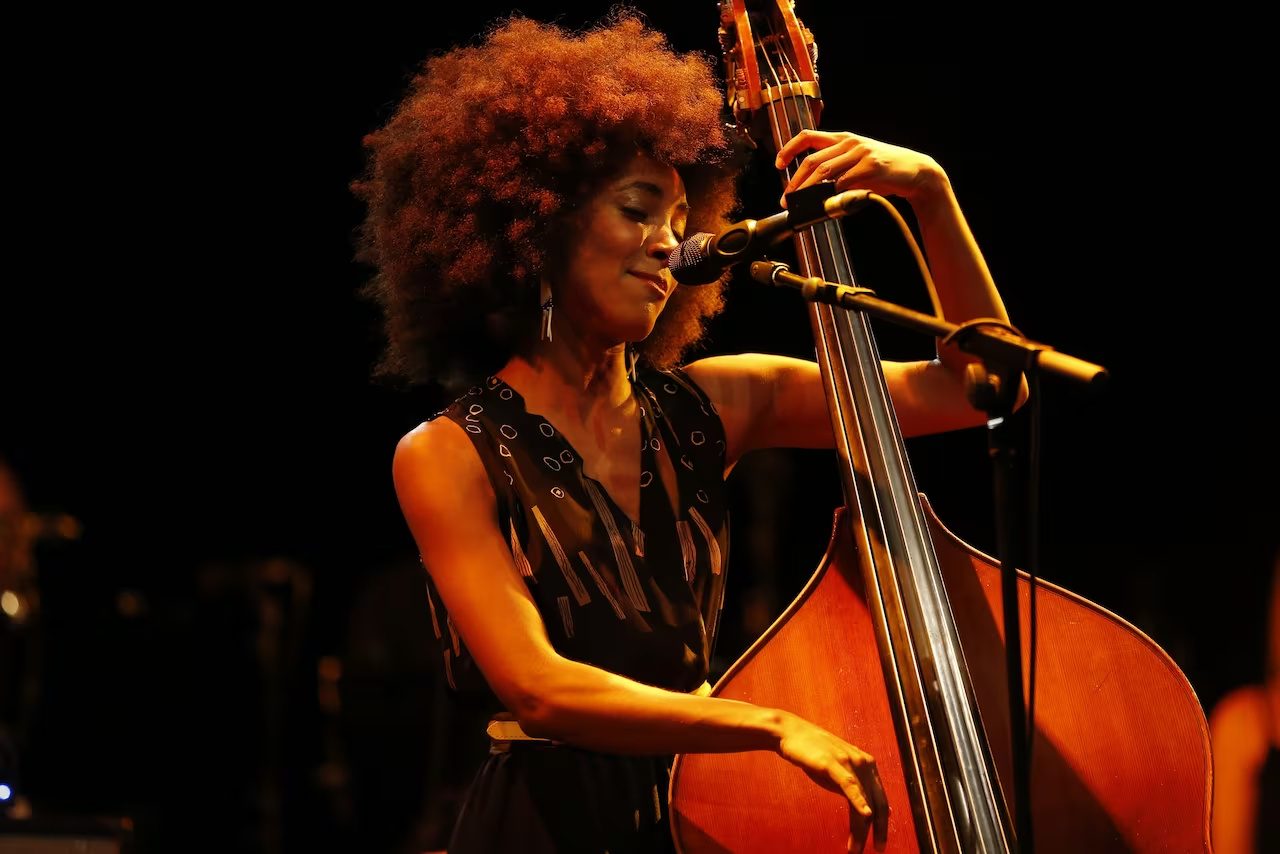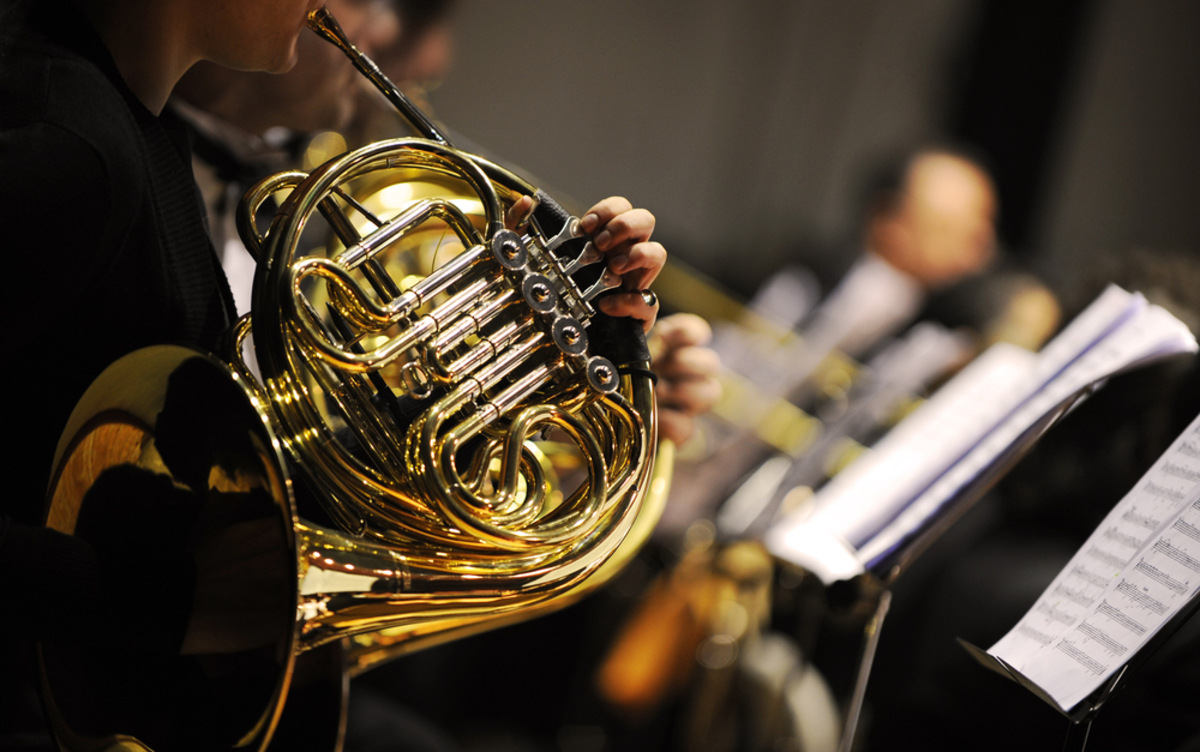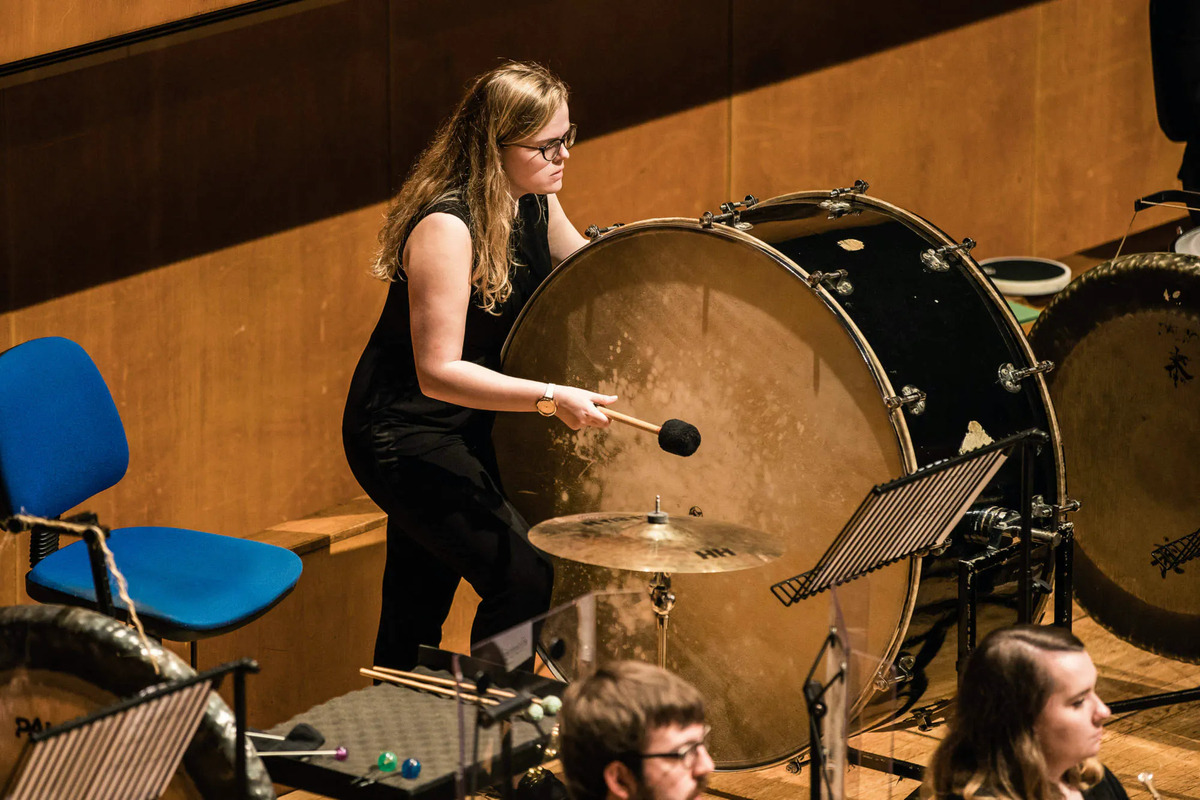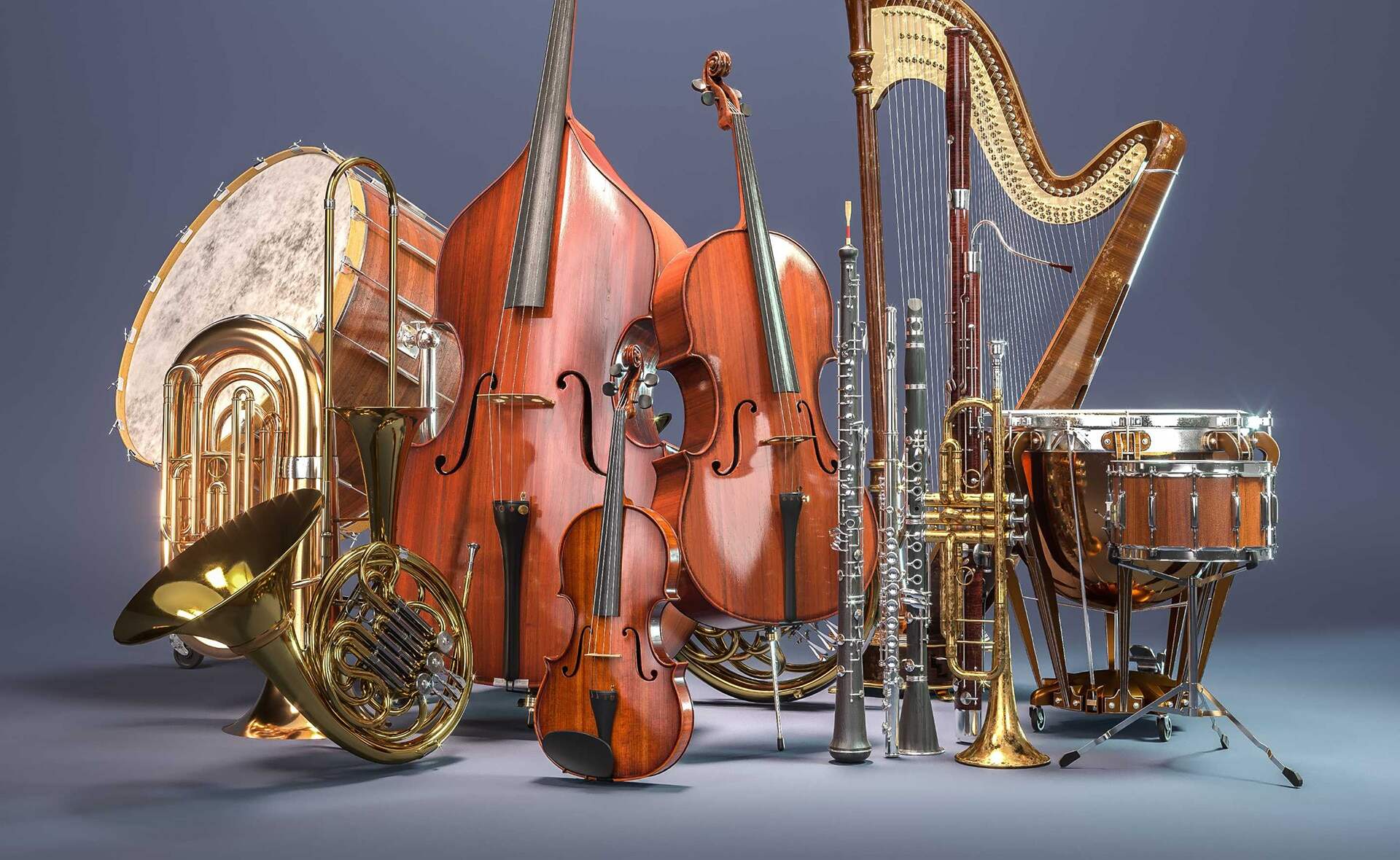Home>Genres>Symphony>In A Symphony Orchestra What Instrument Is Played By The Concertmaster?
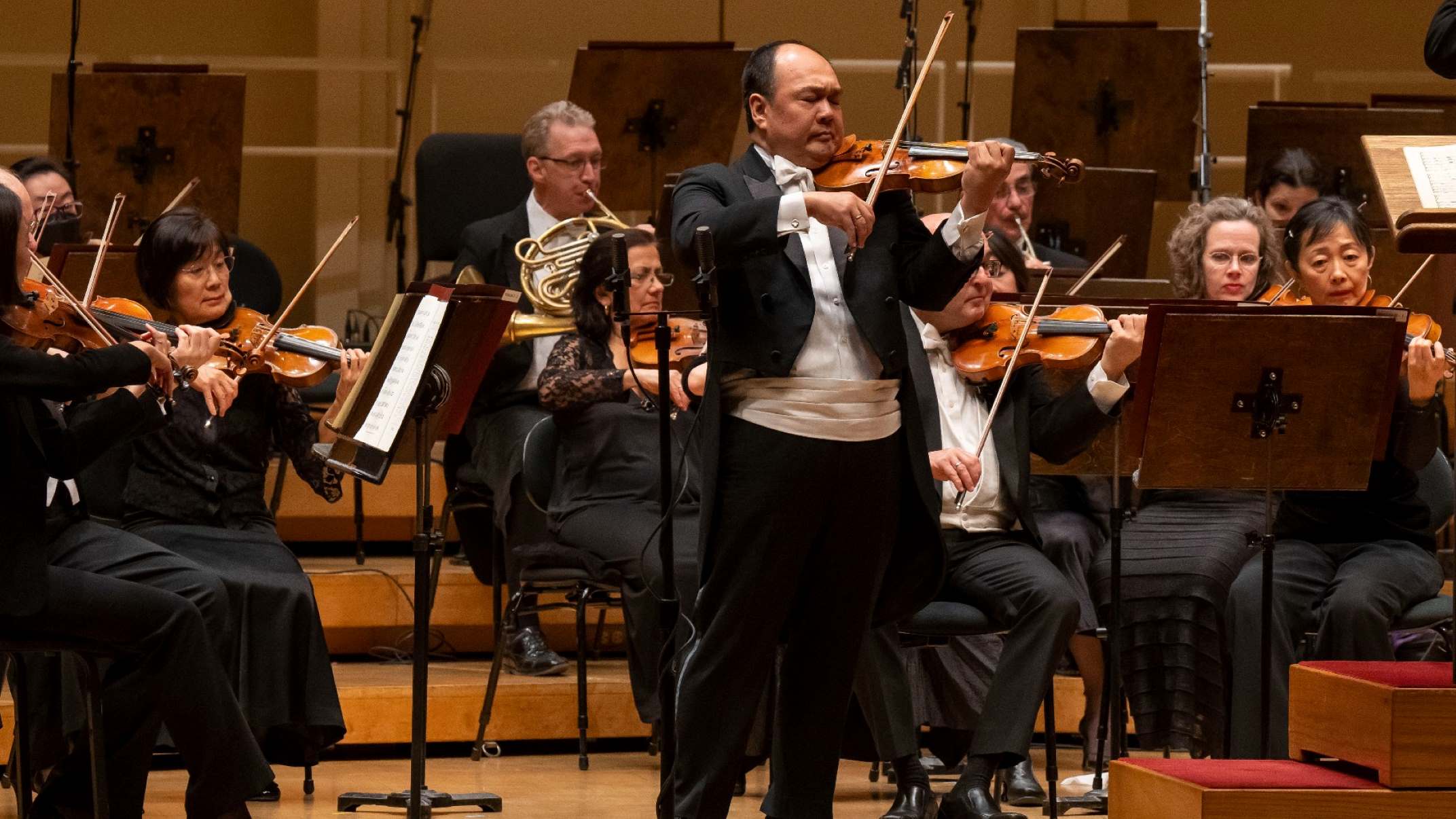

Symphony
In A Symphony Orchestra What Instrument Is Played By The Concertmaster?
Modified: January 22, 2024
The concertmaster in a symphony orchestra is responsible for playing the violin and leading the musicians, setting the tone and ensuring harmony. Experience the brilliance and artistry of the symphony with the concertmaster at the helm.
(Many of the links in this article redirect to a specific reviewed product. Your purchase of these products through affiliate links helps to generate commission for AudioLover.com, at no extra cost. Learn more)
Table of Contents
Introduction
A symphony orchestra is a harmonious collection of talented musicians who come together to create beautiful and awe-inspiring music. In the midst of this cohesive ensemble, there is a pivotal role played by a musician known as the concertmaster. Throughout this article, we will delve into the details of what instrument is played by the concertmaster in a symphony orchestra and explore the significance of this role.
The concertmaster, also referred to as the leader of the orchestra, holds a prestigious position within the ensemble. This musician serves as the liaison between the conductor and the rest of the musicians, acting as a bridge to facilitate communication and cohesion during rehearsals and performances.
Not only is the concertmaster a skilled instrumentalist, but they also possess a wealth of musical knowledge and experience. They are not just responsible for playing their instrument with precision and expressiveness but also for leading the entire orchestra through their expertise and thoughtful interpretation of the music.
Join us on this insightful journey as we unravel the essence of the concertmaster’s role and gain a deeper understanding of the instrument they play and their invaluable contribution to the symphony orchestra.
Definition of a Concertmaster
The concertmaster is a highly skilled musician who holds a prominent position within a symphony orchestra. Also known as the principal violinist, the concertmaster is the first chair violinist and acts as the leader of the ensemble. This role requires a deep understanding of musical interpretation, an exceptional level of technical proficiency, and the ability to lead and communicate effectively with the conductor and other members of the orchestra.
As the leader of the orchestra, the concertmaster is responsible for setting the tone and musical direction of the ensemble. They work closely with the conductor to translate the conductor’s vision into a unified performance. The concertmaster plays a crucial role in shaping the interpretation of the music, ensuring that all musicians are synchronized and playing together with precision and expression.
Beyond their musical abilities, the concertmaster also serves as a representative of the orchestra. They often act as a spokesperson for the musicians, addressing any concerns or questions they may have. The concertmaster also takes on the responsibility of mentoring and guiding the younger members of the orchestra, inspiring them to strive for excellence in their musical journey.
It is important to note that while the concertmaster is typically a violinist, there are exceptions in some orchestras where the concertmaster may play a different instrument such as the cello or the oboe. Regardless of the instrument, the concertmaster is always recognized as a vital part of the orchestra and plays a pivotal role in the overall performance.
Now that we have a clearer understanding of the concertmaster’s definition and responsibilities, it’s time to explore their role within the symphony orchestra in more detail.
Role of the Concertmaster in a Symphony Orchestra
The role of the concertmaster in a symphony orchestra extends far beyond just being an exceptional musician. They are the musical leader of the ensemble and play a crucial role in maintaining unity and cohesion among the musicians. Here are some key aspects of the concertmaster’s role:
1. Leading the Orchestra: The concertmaster acts as a bridge between the conductor and the orchestra, assisting in the interpretation and execution of the conductor’s vision. They lead the orchestra through their playing, ensuring that the musicians follow their lead in terms of phrasing, dynamics, and articulation.
2. Setting the Standard: The concertmaster sets a high musical standard for the orchestra. They must demonstrate exceptional technical skills, musicality, and expressiveness, inspiring other musicians to strive for excellence in their playing.
3. Providing Musical Insights: As an experienced musician, the concertmaster provides invaluable musical insights and interpretation to the ensemble. They contribute to rehearsals and performances by offering suggestions on bowings, fingerings, and musical nuances, enhancing the overall musicality of the orchestra.
4. Acting as a Soloist: In certain orchestral performances, the concertmaster is called upon to perform solo passages or solos within a section. They showcase their virtuosity and serve as a musical leader not only within the orchestra but also in the spotlight as a featured soloist.
5. Encouraging Unity: The concertmaster fosters a sense of unity and teamwork among the musicians. They help to create a positive and supportive environment, promoting collaboration and ensuring that all sections of the orchestra work together seamlessly.
6. Mentoring Young Musicians: The concertmaster often takes on the responsibility of mentoring and guiding younger musicians in the orchestra. They offer their expertise and support to help develop the talent and skills of the next generation of musicians.
The role of the concertmaster is multi-faceted and significant in the symphony orchestra. Their leadership, musicality, and ability to connect the conductor’s vision with the musicians make them an indispensable part of the ensemble.
Responsibilities of the Concertmaster
The concertmaster in a symphony orchestra carries a wide range of responsibilities that go beyond their exceptional musicianship. These responsibilities contribute to the overall success and smooth functioning of the ensemble. Here are some key responsibilities of the concertmaster:
1. Leading Section Rehearsals: The concertmaster leads section rehearsals, where they work closely with their fellow violinists to ensure that the sections are well-prepared and in sync with each other. They help refine the ensemble’s sound, balance, and intonation.
2. Interpreting the Music: The concertmaster plays a vital role in interpreting the music and conveying the conductor’s vision to the orchestra. They study the score thoroughly, understanding the composer’s intentions, and bring their own artistic interpretation to the music.
3. Cueing and Phrasing: One of the important responsibilities of the concertmaster is to provide clear cues for the orchestra, indicating important entrances, tempo changes, and musical phrasing. They ensure that the ensemble stays together and transitions smoothly between different sections of the music.
4. Collaborating with the Conductor: The concertmaster works closely with the conductor, assisting in rehearsals and performances. They communicate the needs of the orchestra to the conductor, mediate between different sections, and help translate the conductor’s musical ideas into cohesive performances.
5. Leading by Example: As a leader, the concertmaster sets the standards for musicianship, professionalism, and dedication. They exhibit a high level of commitment and preparation, inspiring other musicians to strive for excellence in their performance.
6. Soloist Performances: The concertmaster often performs solo passages or solos within a section during orchestral performances. They shine as a featured soloist, showcasing their technical mastery and musicality, while still seamlessly integrating with the rest of the orchestra.
7. Serving as a Spokesperson: The concertmaster frequently serves as a spokesperson for the musicians, addressing any concerns or questions they may have. They advocate for the needs of the orchestra and facilitate effective communication between the musicians and the administration.
8. Mentoring Young Musicians: The concertmaster plays a crucial role in mentoring and guiding younger musicians in the orchestra. They provide support, guidance, and inspiration to help develop their musical abilities and foster a sense of camaraderie within the ensemble.
The responsibilities of the concertmaster require not only exceptional musical talent but also strong leadership skills, effective communication, and a deep understanding of the ensemble dynamics. Their contributions ensure the cohesiveness and excellence of the symphony orchestra.
The Concertmaster’s Instrument
Traditionally, the concertmaster in a symphony orchestra plays the violin. The violin is a string instrument known for its rich and versatile sound, and it holds a central role in the orchestra. However, it’s important to note that there are exceptions in some orchestras where the concertmaster may play a different instrument such as the cello or the oboe.
The violin is chosen as the concertmaster’s instrument for several reasons. Its range and timbre allow for expressive playing and blending well with the rest of the string section. The violin’s ability to sustain long, lyrical phrases and produce virtuosic passages makes it well-suited for the demands of the concertmaster’s role.
The concertmaster’s violin is typically of high quality. It may be a fine antique instrument, often crafted by renowned violin makers. These instruments have exceptional tonal qualities and are carefully selected for their projection, responsiveness, and ability to produce a warm and resonant sound.
Not only does the concertmaster’s instrument need to sound exceptional, but it also requires meticulous care and maintenance. The concertmaster invests time and effort in ensuring that the instrument is well-tuned, the strings are in good condition, and the instrument is properly cared for to maintain its optimal playing condition.
It’s worth mentioning that in some symphony orchestras, the concertmaster might play a different instrument. For instance, in certain Baroque ensembles, the concertmaster may play the harpsichord or the flute, depending on the repertoire being performed. This highlights the versatility and adaptability of the concertmaster in fulfilling their role within a specific musical context.
Regardless of the instrument played, the concertmaster’s skill, expertise, and musicality shine through, creating a cohesive and immersive musical experience for both the orchestra and the audience.
Importance of the Concertmaster in a Symphony Orchestra
The concertmaster holds a position of immense importance within a symphony orchestra. Their role goes beyond being just a skilled musician; they are the backbone of the ensemble, providing leadership, guidance, and fostering a sense of unity among the musicians. Here are some reasons why the concertmaster is crucial to the orchestra:
1. Musical Unity: The concertmaster acts as a musical leader, guiding and unifying the musicians. They ensure that all sections of the orchestra are synchronized, playing in perfect harmony, and following the conductor’s cues and interpretation.
2. Interpretation and Expression: The concertmaster plays a crucial role in shaping the interpretation and expression of the music. Their artistic insights and musicality influence the performance style and dynamics, breathing life and emotion into the compositions.
3. Communication with the Conductor: As the liaison between the conductor and the orchestra, the concertmaster bridges the gap in communication. They help translate the conductor’s vision into actionable instructions, ensuring that the ensemble understands and executes the conductor’s musical intentions.
4. Leading the Section: The concertmaster leads their section, whether it is the violin section or another instrument. They establish the section’s tone, intonation, and artistic interpretation, ensuring that the section performs with precision and unity.
5. Soloistic Contributions: In many orchestral compositions, the concertmaster has solo passages or solos within a section. Their virtuosic performances demonstrate the instrument’s capabilities and add depth and richness to the overall musical texture.
6. Mentoring and Inspiring: The concertmaster serves as a mentor and role model for younger musicians in the orchestra. They inspire and guide them, helping to develop their skills, musicality, and professionalism, ensuring the continuation of musical excellence across generations.
7. Representing the Orchestra: The concertmaster often serves as a spokesperson for the orchestra. They advocate for the needs and interests of the musicians, promoting a positive and collaborative environment within the ensemble.
The concertmaster’s importance lies not only in their exceptional musicianship but also in their ability to bring together a diverse group of talented musicians and create a unified and captivating musical experience. Their presence on stage is a testament to their leadership, expertise, and dedication, enhancing the overall performance and leaving a lasting impact on both the orchestra and the audience.
Conclusion
The concertmaster holds a vital role in a symphony orchestra, serving as the musical leader and liaison between the conductor and the musicians. Their instrument, whether it is the violin or another instrument, acts as a centerpiece in the ensemble, contributing to the overall sound and expression of the orchestra.
From leading rehearsals, interpreting music, and providing musical insights to mentoring younger musicians and representing the orchestra, the concertmaster’s responsibilities are diverse and essential. They play a key role in maintaining unity, guiding the musicians, and shaping the overall artistic vision of the ensemble.
Furthermore, the concertmaster’s contributions extend beyond the technical aspects of playing an instrument. Their leadership, passion, and dedication inspire and motivate the entire orchestra, promoting a collaborative and cohesive environment. They set the standard for excellence and help create memorable and engaging performances that leave a lasting impact on audiences.
The concertmaster’s significance cannot be overstated. They are the glue that holds the orchestra together, ensuring that each musician performs at their best and that the ensemble functions as a well-oiled machine. Their musical expertise, communication skills, and ability to lead with authority and grace make them an invaluable asset to any symphony orchestra.
In conclusion, the concertmaster’s role goes far beyond simply playing their instrument. They are the guiding force that brings together the talents of individual musicians to create a harmonious and awe-inspiring musical experience. Their passion, dedication, and unwavering commitment contribute to the success and artistic integrity of the symphony orchestra as a whole.
Next time you attend a symphony concert, take a moment to appreciate the concertmaster and their instrumental and leadership prowess. Their presence on stage sets the stage for a truly remarkable musical journey.

